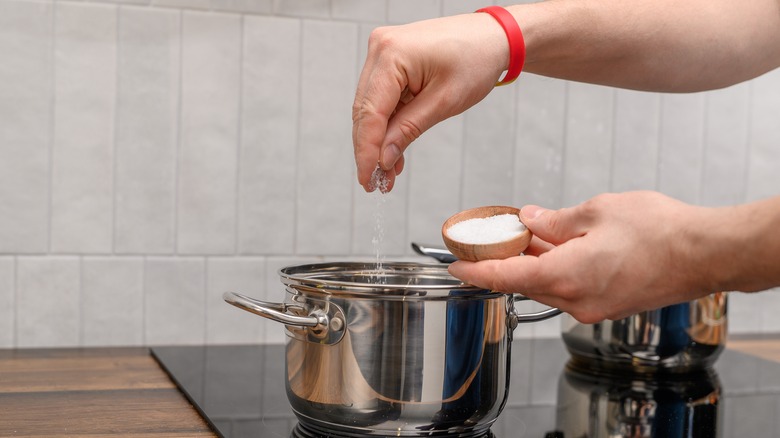Gordon Ramsay's Tip For Adding Dried Pulses To Soups And Stews Is A Bit Controversial
Feeling cozy? Indulge your mood with warming bowls of soups and stews. To soothe the soul with a comforting dish, use this simple tip from the legendary chef Gordon Ramsay to cook dried pulses like lentils, beans, and chickpeas: Hold off until the final stages of cooking, when your pulses are properly cooked, before adding salt.
The reason behind this comes down to a phenomenon called osmosis, a process that's also at play when macerating berries to enhance the sweetness of desserts. Osmosis is a process where water moves from a region of low solute (in this case, salt) concentration to high solute concentration. If dried pulses are salted too early, it can draw out their moisture, resulting in an overly firm texture and a longer cooking time. Waiting to add salt until your pulses are almost fully cooked will ensure a tender, creamy texture and a pleasant mouthfeel.
Not all agree on when to salt cooking pulses
Contrary to this approach, there is a camp of cooks who prefer to salt beans from the beginning, suggesting that it produces better results. The rationale behind this technique is that early salting allows the salt to fully infuse its flavor into the pulses, resulting in a more evenly seasoned dish. Regardless of when you salt the pulses, it's important to salt them, period. Otherwise, you're in for a bland, lackluster dish that fails to do justice to the pulses' full potential.
Dried pulses are an essential pantry staple and offer a wallet-friendly solution to preparing nourishing, satiating, delicious meals for the everyday home cook. If you're inspired to utilize pulses in your culinary ventures, consider running your own experiments in the kitchen to see which salting approach works best for you. Perfect your technique and gear up to prepare these versatile, nutritional powerhouses into a comforting batch of daal, hearty lentil soup, homemade refried beans, and more!

